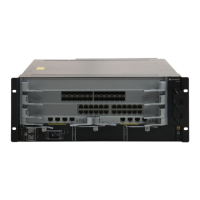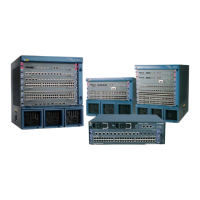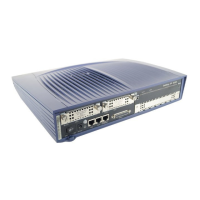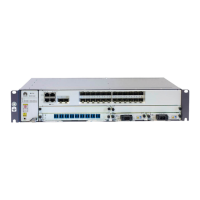Loopback1 - 3.3.3.9/32
P GigabitEthernet1/0/0 VLANIF 20 168.1.1.2/24
GigabitEthernet2/0/0 VLANIF 30 169.1.1.1/24
Loopback1 - 2.2.2.9/32
CE1 GigabitEthernet1/0/0 VLANIF 10 10.1.1.1/24
CE2 GigabitEthernet1/0/0 VLANIF 10 10.1.1.2/24
Configuration Roadmap
The configuration roadmap is as follows:
1. Configure the routing protocol on the backbone network to implement interworking.
2. Set up a remote LDP session between the PEs.
3. Set up a tunnel between the PEs to transmit user data.
4. Enable MPLS L2VPN on the PEs.
5. Create VSIs on PEs, specify LDP as the signaling protocol, and bind the VSI to related AC
interfaces.
6. On PE1, configure VLAN stacking on the sub-interface connected to Switch1 and connect
the sub-interface to the VPLS network.
7. On PE2, configure a QinQ sub-interface on the interface connected to Switch2 and connect
the sub-interface to the VPLS network.
8. On Switch1, add the interface connected to CE1 to a specified VLAN.
9. On Switch2, configure selective QinQ on the interface connected to CE2.
Data Preparation
To complete the configuration, you need the following data:
l VSI name and VSI ID
l IP addresses of peers and tunnel policy used for setting up the peer relationship
l Interfaces to which the VSI is bound
l VLAN IDs used in VLAN stacking
l Encapsulation mode of the sub-interfaces and VLANs that the sub-interfaces belong to
Procedure
Step 1 Configure the VLANs that the interfaces belong to according to Figure 5-15.
The configuration procedure is not mentioned.
NOTE
l The AC-side physical interface and PW-side physical interface of a PE cannot be added to the same
VLAN; otherwise, a loop occurs.
l After the configuration, the packets sent from a CE to a switch should contain a VLAN tag.
Quidway S7700 Smart Routing Switch
Configuration Guide - Ethernet 5 QinQ Configuration
Issue 01 (2011-07-15) Huawei Proprietary and Confidential
Copyright © Huawei Technologies Co., Ltd.
295

